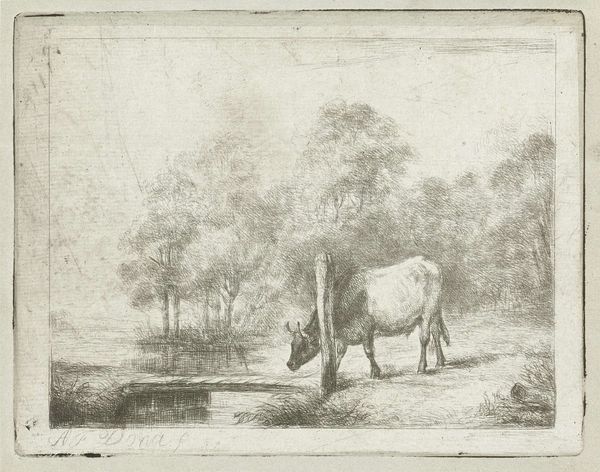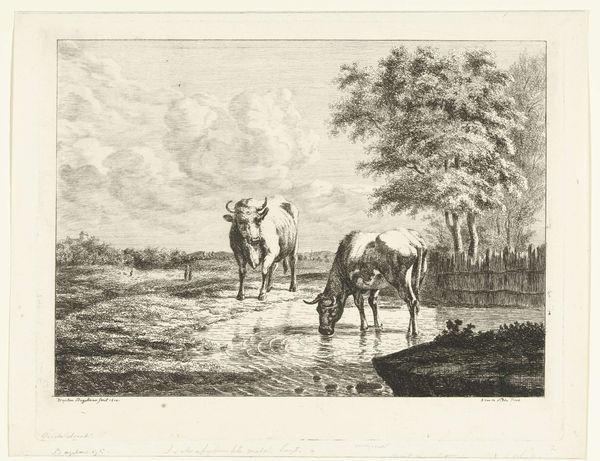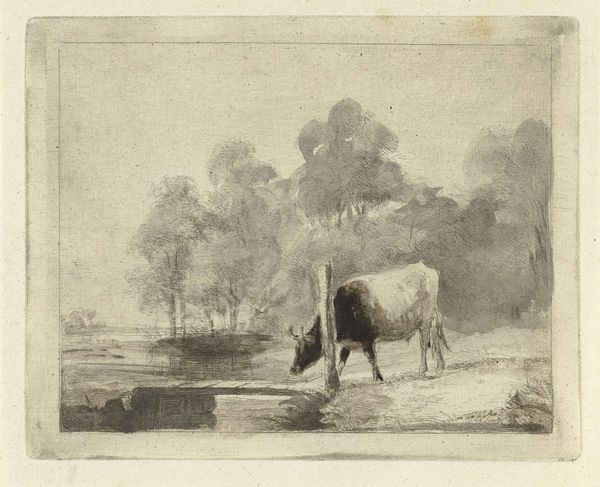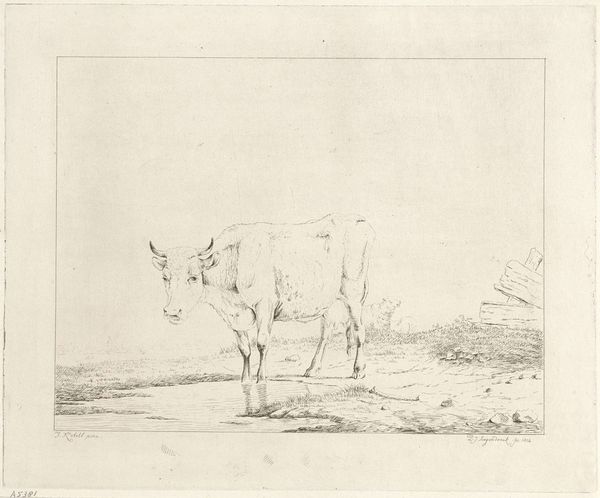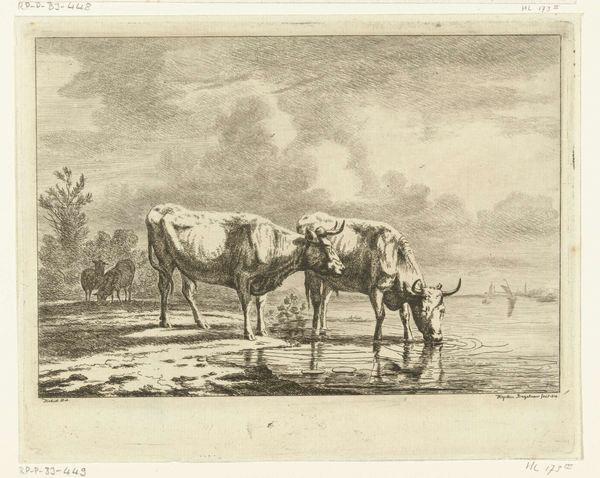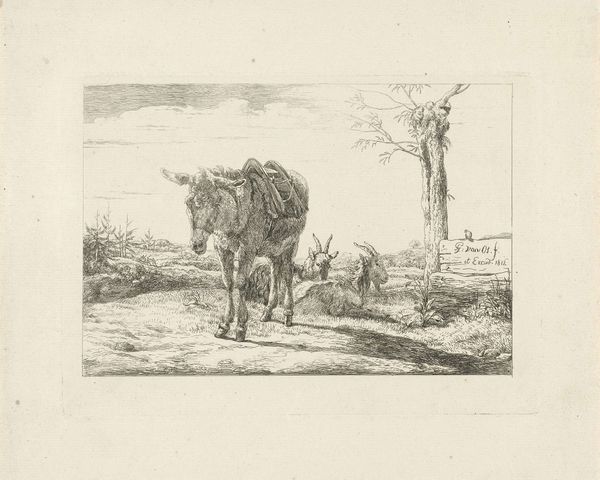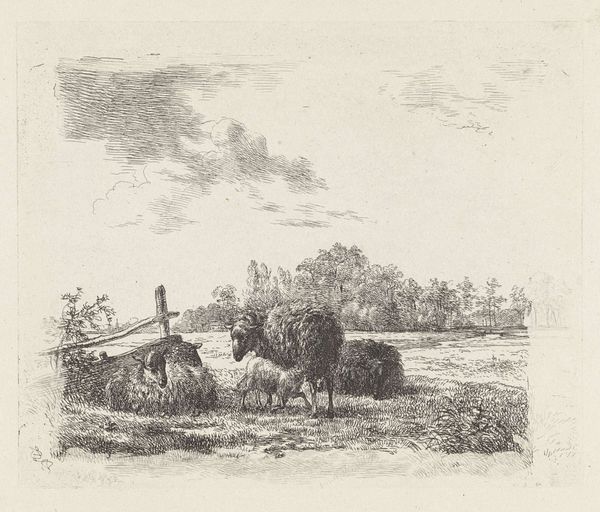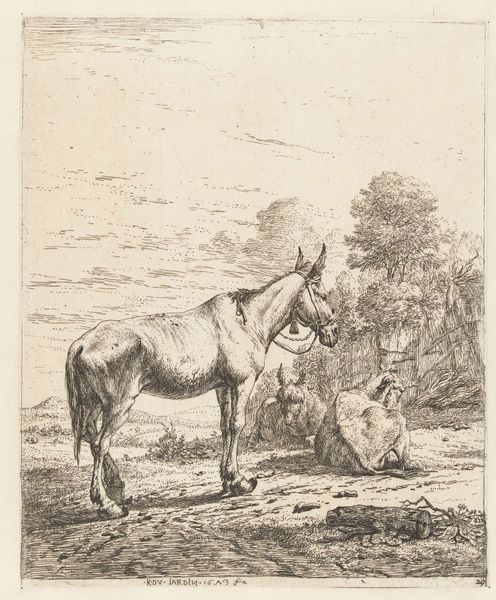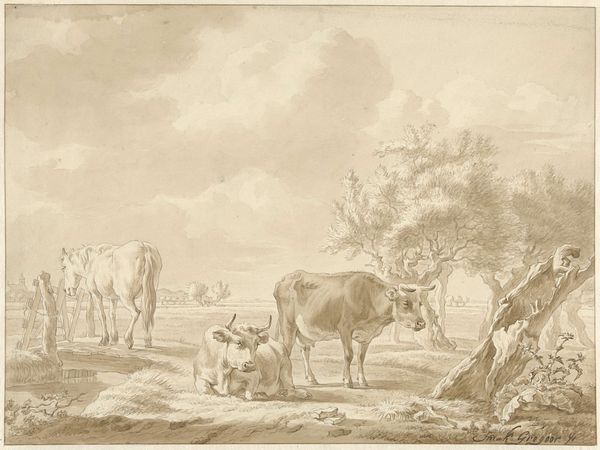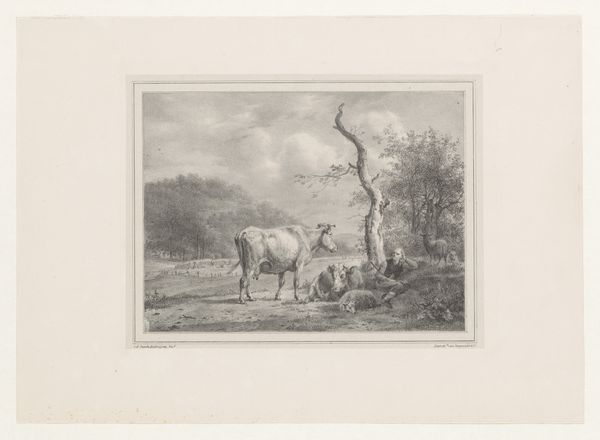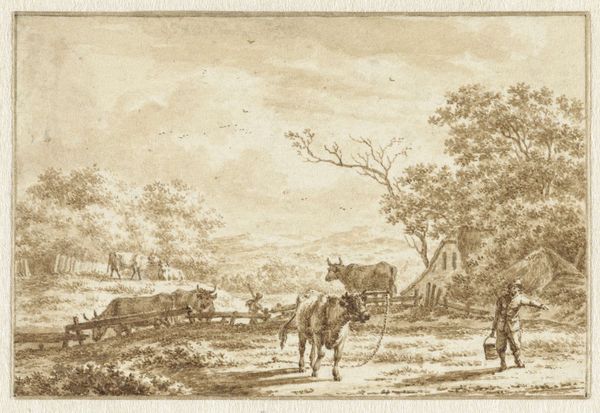
print, etching
#
dutch-golden-age
# print
#
etching
#
landscape
#
charcoal drawing
#
genre-painting
#
realism
Dimensions: height 105 mm, width 130 mm
Copyright: Rijks Museum: Open Domain
Antonie Franciscus Dona created this etching of a cow in a landscape sometime in the mid-19th century. The image presents a serene view of the Dutch countryside, a popular subject during the Romantic era. In the Netherlands, landscape art served as a form of national expression. It reflected a deep connection to the land and the rural way of life. Artists like Dona often depicted cows, windmills, and waterways, symbolizing the country’s agricultural wealth and its ongoing battle against the sea. This etching, with its careful attention to light and shadow, elevates a simple scene into an emblem of national identity. To fully understand such works, we might examine agricultural policies, land reclamation projects, and the broader cultural values that shaped Dutch society at this time. Only then can we appreciate the complex layers of meaning embedded in this seemingly straightforward image.
Comments
No comments
Be the first to comment and join the conversation on the ultimate creative platform.
